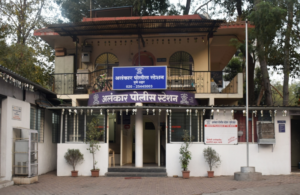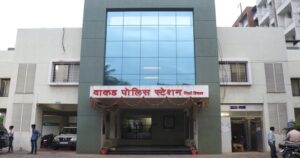Cabinet approves Submission of India’s Second Biennial Update Report (BUR) to United Nations Framework Convention on Climate Change (UNFCCC)
28 DEC 2018 : The Union Cabinet chaired by Prime Minister Shri Narendra Modi has approved Submission of India’s second Biennial Update Report (BUR) to the United Nations Framework Convention on Climate Change towards fulfilment of the reporting obligation under the Convention.
Salient Features:
- The scope of BUR is to provide an update to India’s first BUR to UNFCCC. The BUR contains five major components — National Circumstances; National Greenhouse Gas Inventory; Mitigation Actions; Finance, Technology and Capacity Building Needs and Support Received and Domestic Monitoring, Reporting and Verification (MRV) arrangements.
- BUR has been prepared based on a range of studies conducted at the national level.
- The BUR has undergone multitier review process, through peer review, review by Technical Advisory Committee of Experts chaired by Additional Secretary (Climate Change) and by National Steering Committee chaired by Secretary (EF&CC). The National Steering Committee is an inter-ministerial body comprising NITI Aayog, Agricultural Research and Education, Agriculture Cooperation and Farmers Welfare, Economic Affairs, External Affairs, New and Renewable Energy, Science & Technology, Coal, Power, Railway Board, Road Transport & Highways, Shipping, Petroleum & Natural Gas, Water Resources, River Development and Ganga Rejuvenation, Health & Family Welfare, Ministry of Earth Sciences, Rural Development, Housing and Urban Affairs, Industrial Policy & Promotion, Ministry of Commerce and Industry, Steel, Civil Aviation, Statistics and Programme Implementation and India Meteorological Department. The BUR has been finalized after addressing all the relevant comments and modifications as per the multi-tier review process.
- In 2014, a total of 26,07,488 Gigagram (Gg) CC-2 equivalent* (around 2.607 billion tonnes of CC-2 equivalent) of GHGs were emitted from all activities (excluding LULUCF) in India. The net national GHG emissions after including LULUCF were 23,06,295 Gg COa equivalent (around 2.306 billion tonnes of CO2 equivalent). Out of the total emissions, energy sector accounted for 73%, IPPU 8%, agriculture 16% and waste sector 3%. About 12% of emissions were offset by the carbon sink action of forestland, cropland and settlements. A summary of India’s national GHG inventory of 2014 is provided in the table below:
| Category
|
CO2 equivalent (Gg)
|
| Energy
|
19,09,765.74
|
| Industrial Process and Product Use
|
2,02,277.69
|
| Agriculture
|
4,17,217.54
|
| Waste
|
78,227.15
|
| Land Use, Land Use Change and Forestry (LULUCF)**
|
-3,01,192.69
|
| TOTAL without LULUCF
|
26,07,488.12
|
| TOTAL with LULUCF
|
23,06,295.43
|
**negative emission value implies sink action i.e. net carbon removal from the atmosphere
* 1 Gigagram (Gg) = 109 grams; Greenhouse gases are converted to CO2 equivalents (CO2e or CO2eq) using their respective Global Warming Potentials.
Major impact:
Submission of India’s Second BUR will fulfil the obligation of India to furnish information regarding implementation of the Convention, being a Party.
Background:
India is a Party to the United Nations Framework Convention on Climate Change (UNFCCC). The Convention, in accordance with its Article 4.1 and 12.1, enjoins upon all Parties, both developed country Parties and developing country Parties to furnish information, in the form of a National Communication regarding implementation of the Convention. Conference of Parties to the UNFCCC in its sixteenth session decided vide paragraph 60 (c) of decision 1 that developing countries, consistent with their capabilities and the level of support provided for reporting, should also submit biennial update reports containing updates of national greenhouse gas inventories and information on mitigation actions, needs and support received. Decision 2 of COP17, in paragraph 41 (f) states that Biennial Update Reports shall be submitted every two years.








